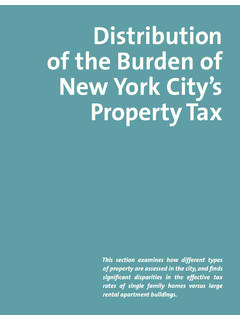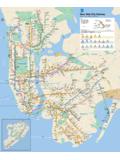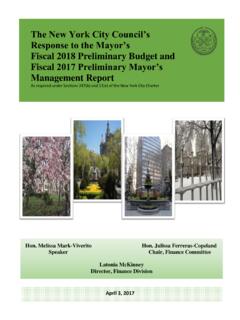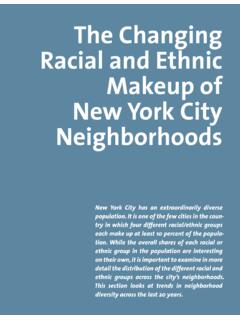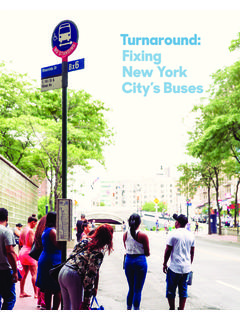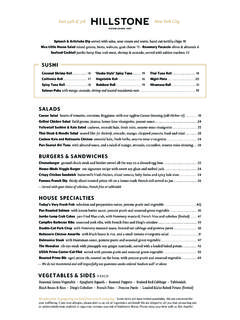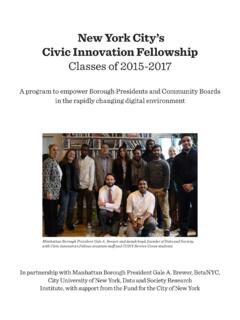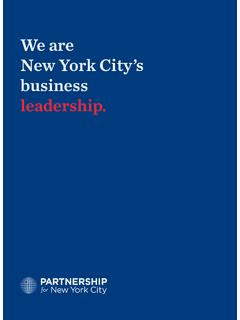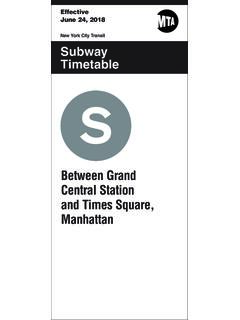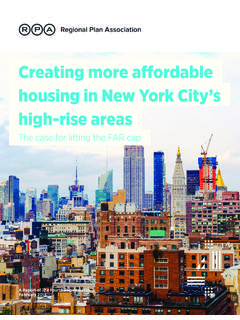Transcription of New York City’s High Line: Participatory Planning or ...
1 1 New york city s High line : Participatory Planning or gentrification ? Ariel B. Alvarez, McNair Scholar The Pennsylvania State University McNair Faculty Research Advisor: Melissa W. Wright, Ph. D Professor of Geography and Professor of Women Studies College of Earth and Mineral Sciences The Pennsylvania State University Abstract In the last fifty years, Participatory Planning methods have been utilized by practicing urban planners because they emphasize citizen involvement and equitable representation of disempowered community members. This paper analyzes the degree to which the nonprofit organization and self-proclaimed community group Friends of the High line facilitated citizen input during remediation of an abandoned elevated freight-car railway, the High line , into a public park in West Chelsea, New york city .
2 Findings suggest that the High line is an atypical example of a community driven urban revitalization project and that the Participatory Planning model may need to be redefined when applied to affluent communities. Introduction The innovative and sleekly designed public High line park running from Ganesvoort St. to West 20th St. in Manhattan, New york was once considered to be nothing more than an unsightly relic of New york city s industrial past. Property developers viewed the elevated idle freight car line as a hindrance to potential economic development for the neighborhood while most West Chelsea residents paid little attention to the massive metal structure that had simply morphed into the mundane, industrial urban landscape (High line History 2010).
3 However, once discussion about demolishing the High line began amongst members of the Chelsea Property Owners, a group seeking to develop real-estate below the railway, and the former New york city Giuliani administration, two West Chelsea community residents Robert Hammond and Joshua David initiated a grassroots nonprofit organization known as Friends of the High line . Friends of the High line saved the railway from demolition and remediated it into the thriving public park it is today. Hammond and David founded this nonprofit in order to save an intriguing piece of New york city history that would not only increase tax revenues for the entire city of New york , but more specifically enrich the West Chelsea community financially with the implementation of new business and increased property values resulting from the new real-estate developments (David 2002).
4 However, Friends of the High line is not only recognized for revitalizing the West Chelsea area; their efforts to maintain the park as a community-initiated project and to continue to cultivate the dynamic surrounding community of West Chelsea have also been critically acclaimed by external onlookers (p. 127; Friends of the High line ). 2 For example, the Rockefeller Foundation bestowed the Jane Jacobs Medal to Hammond and David as a way to recognize their innovative creation of a more diverse, dynamic, and equitable city (Itzkoff 2010; Jane Jacobs Medal). Due to such positive feedback, cofounders Hammond and David, go so far as to define the High line as being a bottom-up project (2011, p.)
5 127). Despite this affirmative publicity, further research and explanation of Friends of the High line s efforts for community engagement is necessary. By questioning their methods of community involvement, I intend to analyze the group s role in incorporating citizen participation in the High line project. When installing future projects in urban public spaces, this analysis of the High line can serve as a model for further innovation in the Participatory Planning method that continues to be a dominant topic of conversation within the field of urban Planning . In the last fifty years, Participatory Planning and its implementation within American urban Planning have reshaped the theoretical discussion of urban design as well as its impact on the built environment in communities.
6 Emerging out of widespread community activism during the 60s and 70s, Participatory Planning generally alludes to the inclusion of everyday, ordinary people within the Planning decisions of their communities (Innes 1995). Most notably, the 1961 publication The Death and Life of Great American Cities by Jane Jacobs, a charismatic community activist, is generally identified as the cornerstone of Participatory Planning that ignited the discussion about optimal methods of citizen inclusion and if such attempts should be a priority in the urban Planning profession (1961). In the years leading to Jacob s writing of Death and Life, World War II American cities had been transformed by the top-down approaches of urban renewal.
7 Federal legislation such as the Housing Act of 1949 and the Amending Act of 1954, endowed urban planners and local governments with abounding and irrevocable authority to clear entire neighborhoods deemed as blighted (Hall 2002, p. 247). However, as destruction of neighborhoods in New york city , Chicago, and numerous other cities occurred, local residents became increasingly enraged at their displacement from their homes and neighborhoods. Excluded from paramount Planning decisions that drastically altered community structure and ignored neighborhood values, residents finally protested and compelled urban planners to reevaluate their top-down Planning methods (Hall 2002, p.)
8 249). Planners such as Robert Moses, the Master Builder of 1940s-60s New york city , was the most distinct example of a top-down planner whose decision-making techniques as an uncontested expert sparked an outcry from concerned residents. Jane Jacobs, a resident herself of Greenwich Village, assessed the possibility of her own neighborhood being destroyed as a repercussion to Moses urban renewal proposal for a Lower Manhattan Expressway project (Hall 2002, p. 253). With the looming threat of her own neighborhood s destruction, Jacobs s noteworthy book came at an opportune moment in which her ideas inspired community activism among local citizens and planners across the nation.
9 Specifically, her challenge to Moses and the visions he had for developing lower Manhattan have had a lasting impact on the Participatory Planning discussion that continues to pervade the urban Planning profession to this day. As such, her ideas signaled the beginning of a dynamic conversation germane to the nature of Participatory Planning and the best tactics for its execution. Varied terms such as advocacy Planning , communicative Planning , and transformative Planning emerged (Klemeck 2009, pg. 76; Fainstein 2000, pg. 456; Friedmann 2011). Despite variations in terminology, all planners who abide to community Participatory methods strive to authentically include citizens in the Planning process of their urban localities.
10 3 While the Planning profession has evolved over time due to its history and the ongoing discussions that have ensued, a closer analysis of nonprofit organizations roles in further facilitating resident participation in urban revitalization projects is necessary for improving how planners, government officials, and residents interact to create truly public open spaces for the entire community. This paper will analyze, through Jacobs lens of Planning , the extent to which the nonprofit organization, Friends of the High line , utilized Participatory Planning methods to engage the West Chelsea community in the Planning and design decisions for the New york city public park, the High line .


